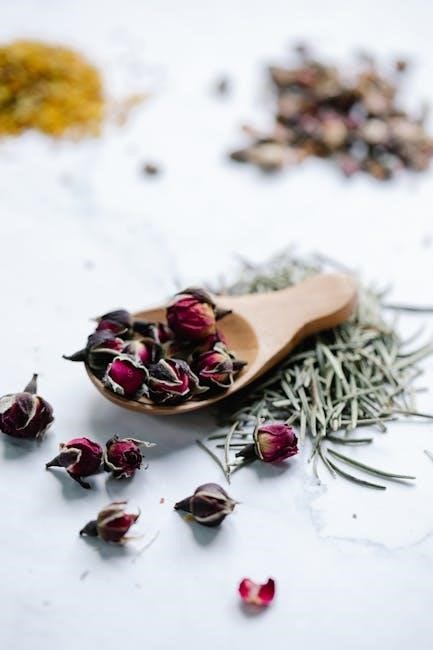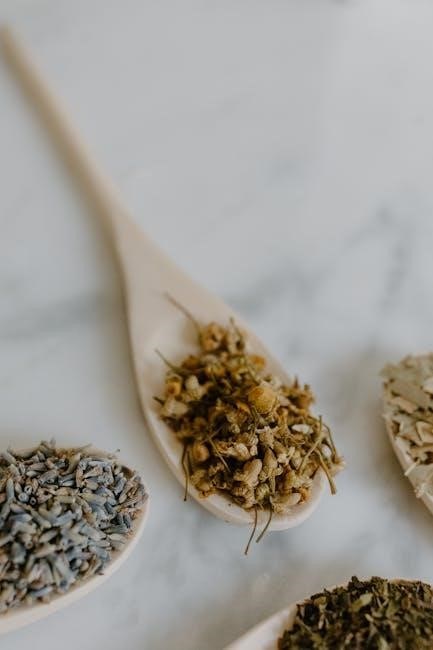Herbs have played a significant role in Biblical history, serving as
sources of medicine, flavor, and spiritual significance. Exploring the
healing properties of these herbs reveals insights into ancient practices
and their relevance to modern wellness.
The Significance of Herbs in Biblical Times
Herbs held immense value in Biblical times, extending beyond culinary
uses. They were integral to medicinal practices, religious rituals, and even
economic systems, reflecting their profound impact on daily life.
Herbs for Culinary and Medicinal Purposes
In Biblical times, herbs were essential for both culinary and medicinal
needs. Many herbs served dual roles, enhancing the flavor of food while
simultaneously providing healing benefits. Spices like cumin, cinnamon, and
garlic added depth to dishes and possessed anti-inflammatory properties.
Herbs were used to treat various ailments, from soothing sore throats to
fighting infections. The integration of herbs into daily life highlights
their importance in maintaining health and well-being. Ancient Egyptians also
used herbs for pharmaceutical purposes. The knowledge of herbs was passed
down.

Key Herbs Mentioned in the Bible
The Bible references numerous herbs, each with unique properties and
significance. Hyssop, myrrh, frankincense, and aloes are among the key
herbs noted for their healing and ritualistic uses in ancient times.
Hyssop: Cleansing and Purification
Hyssop, a prominent herb in the Bible, symbolizes cleansing and
purification. It was used in rituals for spiritual cleansing, particularly
during Passover. Biblical texts highlight its role in purification
ceremonies, signifying its importance in removing impurities. Beyond its
spiritual applications, hyssop also possessed medicinal properties,
contributing to overall well-being. Its association with cleansing extends
beyond the physical realm, encompassing spiritual and emotional purification.
The herb’s significance underscores the ancient understanding of the
connection between physical and spiritual health. Hyssop’s enduring
symbolism reflects its deep-rooted place in Biblical traditions and
practices.
Myrrh and Frankincense: Gifts and Healing Properties
Myrrh and frankincense, highly valued in Biblical times, were
precious gifts symbolizing reverence and wealth. These aromatic resins
possessed significant healing properties, contributing to their esteemed
status. Frankincense, known for its anti-inflammatory effects, was used to
reduce stress and anxiety. Myrrh, on the other hand, had antiseptic
qualities and aided in wound healing. Both resins played crucial roles in
religious ceremonies and medicinal practices. Their presence as gifts
underscores their immense value and recognition of their healing powers.
The use of myrrh and frankincense highlights the ancient understanding
of natural remedies.
Aloes: Anointing and Medicinal Use
Aloes, particularly aloe vera, held a significant place in Biblical
times for both anointing and medicinal purposes. This succulent plant was
highly valued for its soothing and healing properties. In Biblical
contexts, aloes were used as a fragrant ingredient in burial preparations,
symbolizing respect and care for the deceased. Its medicinal applications
included treating wounds, burns, and skin irritations. The gel extracted
from aloe leaves provided relief and promoted healing due to its
anti-inflammatory and moisturizing qualities. The dual role of aloes in
anointing and medicinal use highlights its importance in both spiritual and
physical well-being during Biblical periods.

Specific Biblical References to Herbs and Healing
The Bible contains numerous references to herbs and their healing
properties, highlighting their importance in ancient medicine and daily
life. These references offer insights into Biblical healthcare practices.
Old Testament Examples
The Old Testament provides several examples of herbs used for healing
and medicinal purposes. Figs were used to treat boils, as seen when Isaiah
advised applying a fig poultice to King Hezekiah’s boil. Spices like myrrh,
cinnamon, and cassia were valued, as mentioned in Exodus, not only for their
aromatic properties but potentially for their medicinal benefits. Bitter
herbs were part of the Passover Seder, symbolizing the bitterness of
slavery, and may have had digestive benefits. These instances illustrate the
integration of herbs into daily life, religious rituals, and medical
practices in ancient times.
New Testament Examples
The New Testament also references herbs and spices, highlighting their
continued importance. Myrrh and aloes were used for embalming, as seen in the
preparation of Jesus’ body after the crucifixion, according to the Gospel of
John. While not explicitly for healing in this instance, it reflects the
value placed on these substances. The parable of the mustard seed
illustrates its small size and subsequent growth, though it doesn’t directly
refer to medicinal use; References to anise in the New Testament, though
more about tithing, show the common use of herbs in daily life during
that time.

Modern Relevance of Biblical Herbs
Many herbs mentioned in the Bible are still used today for their
potential health benefits. Incorporating these ancient remedies into modern
wellness routines offers a connection to history.
Incorporating Ancient Herbs into Wellness Routines
Integrating Biblical herbs into modern wellness involves understanding their
historical uses and potential benefits. Consider adding herbs like myrrh
and frankincense through aromatherapy to help reduce stress and anxiety,
drawing from their ancient reputation as mood enhancers. Hyssop, known for its
cleansing properties, can be incorporated into skincare. Aloes, celebrated
for its healing capabilities, can soothe skin irritations. Remember to
research reputable sources and consult with healthcare experts before using
herbs to ensure safety and effectiveness. Learning the historical context
adds depth to the experience.

Resources for Further Study: ‘Herbs in the Bible for Healing PDF’
Finding a reliable “Herbs in the Bible for Healing PDF” can deepen your
understanding. Look for scholarly articles, books, and reputable websites
that offer detailed information on Biblical herbs and their uses.
Books and Articles on Biblical Herbs
To further your exploration of herbs in the Bible, consider consulting
various books and articles. “Healing Herbs of the Bible” by R.K. Harrison
offers a comprehensive look. Search for scholarly articles on platforms like
Academia.edu that delve into the historical and medicinal uses of plants
mentioned in scripture. Look for works discussing ancient Egyptian herbal
practices and their connection to Biblical traditions. Explore resources
that provide insights into the symbolism and cultural significance of herbs
in ancient times. These resources can provide you with a deeper and more
informed perspective.
Cautions and Considerations
When using herbs for healing, exercise caution and seek professional
medical advice. Herbs can interact with medications or have side effects.
Consult qualified healthcare experts for guidance.
Consulting Healthcare Professionals
Prior to incorporating Biblical herbs into your health regimen, consulting
with qualified healthcare professionals is of paramount importance. These
herbs, while holding historical and potential healing significance, may
interact with existing medications or pre-existing health conditions. A
healthcare professional can provide personalized guidance based on your
individual health profile, ensuring the safe and effective use of these
herbs. They can also help determine appropriate dosages and potential side
effects, minimizing any risks associated with self-treatment. Remember that
treatment.
